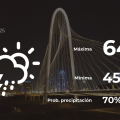
Have you ever been temporarily blinded on the highway by an oncoming car’s headlights? You’re not alone. Recently, there’s been a noticeable increase in the intensity of car headlights, leaving many drivers feeling frustrated and even unsafe. This isn’t just a matter of personal sensitivity; there’s a complex interplay of technology, safety regulations, and public health concerns at play.
The shift to LED headlights is a major factor. While LEDs offer energy efficiency and longevity, their bluish-white light is perceived as significantly brighter than the yellowish-white light of older halogen bulbs. This difference isn’t just subjective; our eyes are more sensitive to the blue wavelengths of LED lights, particularly in our peripheral vision, leading to a stronger sense of glare. Furthermore, headlight intensity itself has demonstrably increased over the last decade or two, creating a new set of safety hazards for other road users.
The Insurance Institute for Highway Safety (IIHS) plays a significant role in this phenomenon. Their safety ratings, which heavily influence car purchases and manufacturing decisions, initially gave poor grades to headlights, prompting car manufacturers to drastically increase their intensity to achieve higher ratings. This focus on improving the safety of vehicle occupants, however, overlooks the safety of pedestrians and other drivers who are frequently blinded by the intense light. The National Highway Traffic Safety Administration (NHTSA), the ultimate authority on vehicle safety standards, has not yet implemented regulations to limit headlight intensity, despite receiving numerous complaints regarding glare.
This issue extends beyond mere discomfort. The rise in pedestrian fatalities, particularly at night, is a concerning trend. Advocates like the Soft Lights Foundation suggest a correlation between the increased brightness of headlights and the larger size of modern vehicles, making it more difficult for drivers to see pedestrians and vice versa. The lack of regulation and the focus solely on occupant safety within current safety ratings is a critical oversight.
So, what can be done? Several solutions exist, ranging from improved headlight alignment and stricter enforcement of existing regulations to the development and implementation of advanced technologies like adaptive beam headlights. These technologies, already common in other parts of the world, are slowly making their way to the US market, but widespread adoption will take time. Individual drivers can also take steps to mitigate glare, such as adjusting their driving habits or using blue light-blocking glasses.
Ultimately, the solution requires a multi-pronged approach. Car manufacturers need to prioritize safety for all road users, not just vehicle occupants. Regulatory bodies like the NHTSA must establish and enforce intensity limits for headlights. And finally, public awareness and civic engagement are crucial to pushing for change and ensuring that the roads become safer and less blinding for everyone.










